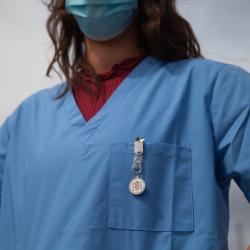Cosmetic Dentist Discusses the Science of Cutting-Edge Dentistry in London
Cosmetic dentistry, a field focused on improving the appearance of teeth, gums, and smiles, has come a long way from its rudimentary beginnings. Historically, dental aesthetics were often secondary to function and health. However, the increasing demand for a perfect smile has propelled the field into a sophisticated branch of dental practice.
In London, cosmetic dentistry has benefitted immensely from global advancements and a strong local emphasis on maintaining high standards of care. The integration of science and artistry in cosmetic dentistry has led to the development of procedures that are not only effective but also minimally invasive and durable.
The Role of Technology in Modern Dentistry
A leading cosmetic dentist in London - Marylebone Smile Clinic states that one of the most significant drivers of change in cosmetic dentistry is technology. Digital dentistry has revolutionized the way dentists diagnose, plan, and execute treatments. Innovations such as digital impressions, 3D printing, and computer-aided design/computer-aided manufacturing (CAD/CAM) have streamlined processes, improved accuracy, and enhanced patient outcomes.
Digital Impressions and 3D Imaging
Traditional dental impressions involved messy materials and could be uncomfortable for patients. Digital impressions, on the other hand, use optical scanners to create precise 3D models of the teeth and gums. This technology not only increases patient comfort but also enhances the accuracy of the impressions, leading to better-fitting restorations.
3D imaging technologies, such as cone-beam computed tomography (CBCT), provide detailed views of the teeth, jaws, and surrounding structures. This level of detail is invaluable for planning complex cosmetic procedures, such as dental implants or orthodontic treatments. CBCT scans allow dentists to visualize the exact placement of implants, assess bone density, and avoid critical anatomical structures, thereby reducing the risk of complications.
CAD/CAM Technology
CAD/CAM technology has revolutionized the fabrication of dental restorations. Traditional methods often required multiple visits and a long waiting period for lab-made crowns, veneers, or bridges. With CAD/CAM, dentists can design and manufacture these restorations in-house, often within a single appointment. The precision of CAD/CAM systems ensures a perfect fit and optimal aesthetics, meeting the high standards expected by patients.
Laser Dentistry
Lasers have become an integral part of modern cosmetic dentistry. They are used in a variety of procedures, from teeth whitening to gum reshaping. Lasers offer several benefits, including reduced pain, minimized bleeding, and faster healing times. For instance, laser teeth whitening can achieve significant shade improvement in a single session without the sensitivity associated with traditional whitening methods.
Advanced Materials for Superior Aesthetics
The materials used in cosmetic dentistry have also seen remarkable improvements. The development of high-strength ceramics, composite resins, and other materials has enabled dentists to create restorations that are virtually indistinguishable from natural teeth.
Porcelain and Ceramic Restorations
Porcelain and ceramic materials are widely used in cosmetic dentistry due to their excellent aesthetic properties. These materials can be color-matched to the patient's natural teeth, providing a seamless appearance. They are also highly durable and resistant to staining, making them ideal for veneers, crowns, and bridges.
Composite Resins
Composite resins have evolved to become a versatile option for cosmetic dental treatments. They are used for bonding, filling cavities, and even crafting veneers. Modern composite resins are available in a range of shades and translucencies, allowing dentists to achieve a natural look. Additionally, advancements in the bonding agents used with composites have improved their longevity and strength.
Zirconia
Zirconia is a relatively new material in the field of cosmetic dentistry but has quickly gained popularity due to its superior strength and aesthetics. It is often used for crowns and bridges, particularly in areas where durability is essential. Zirconia can be layered with porcelain to enhance its aesthetic appeal, resulting in restorations that are both robust and beautiful.
Popular Cosmetic Dentistry Procedures
Cosmetic dentistry encompasses a wide range of procedures aimed at enhancing the appearance of the smile. In London, several treatments have gained popularity due to their effectiveness and the high demand for aesthetic improvements.
Teeth Whitening
Teeth whitening remains one of the most sought-after cosmetic dental procedures. Over time, teeth can become stained or discolored due to factors such as diet, smoking, and aging. Professional teeth whitening procedures can dramatically lighten the colour of teeth, increasing a patient's self-esteem and general appearance whether they are done in-office or at home with kits.
Dental Veneers
Veneers are thin shells of porcelain or composite resin that are bonded to the front surface of the teeth. They are used to correct a variety of aesthetic issues, including discoloration, chips, gaps, and misalignment. Veneers offer a quick and dramatic improvement to the smile, making them a popular choice among patients seeking a Hollywood smile.
Dental Implants
Dental implants, which consists of a titanium post surgically inserted into the mandible and a crown affixed to the post, are the gold standard for restoring missing teeth. Implants look, feel, and function like natural teeth, making them an excellent long-term solution for tooth loss. The success of dental implants relies heavily on precise planning and placement, which is facilitated by advanced imaging and surgical techniques.
Invisalign and Clear Aligners
Orthodontic treatments have also seen significant advancements, with clear aligners like Invisalign becoming increasingly popular. These aligners are virtually invisible and can be removed for eating and cleaning, offering a convenient and aesthetically pleasing alternative to traditional braces. Clear aligners are custom-made using digital impressions and advanced software, ensuring a precise fit and effective results.
Gum Contouring and Reshaping
The appearance of the gums is just as important as the teeth in achieving a harmonious smile. Gum contouring and reshaping procedures, often performed using lasers, can address issues such as a gummy smile or uneven gum lines. These treatments enhance the proportions of the smile and create a more balanced and attractive appearance.
The Science Behind Smile Design
Smile design is a fundamental aspect of cosmetic dentistry, involving a careful analysis of the patient's facial features, dental structures, and personal preferences. The goal is to create a smile that complements the patient's overall appearance and enhances their natural beauty.
Digital Smile Design
Digital smile design (DSD) is a cutting-edge tool that allows dentists to plan and visualize the outcome of cosmetic treatments. Using digital photographs, videos, and 3D models, dentists can create a virtual representation of the patient's future smile. This technology enables precise planning and helps patients understand the potential results before committing to treatment.
Facial Aesthetics and Proportions
A successful smile makeover considers the principles of facial aesthetics and proportions. Dentists analyze factors such as the symmetry of the face, the alignment of the teeth, and the visibility of the gums when smiling. By adhering to these principles, they can design smiles that enhance the patient's natural features and create a harmonious appearance.
Customized Treatment Plans
Every patient is unique, and cosmetic dentistry requires a personalized approach. Dentists develop customized treatment plans based on the individual's needs, goals, and budget. This tailored approach ensures that each patient receives the most appropriate and effective treatments to achieve their desired outcome.
The Impact of Cosmetic Dentistry on Patient Well-Being
Cosmetic dentistry goes beyond improving the appearance of the smile; it has a profound impact on the patient's overall well-being. A beautiful smile can enhance self-esteem, boost confidence, and positively influence social interactions. Furthermore, many cosmetic procedures also contribute to better oral health and function.
Psychological Benefits
The psychological benefits of cosmetic dentistry are well-documented. A smile makeover can significantly enhance a person's self-image and confidence. Patients who were previously self-conscious about their teeth often experience a renewed sense of self-worth and a more positive outlook on life.
Improved Oral Health
Many cosmetic procedures also have functional benefits that improve oral health. For example, dental implants prevent bone loss and maintain the structure of the jaw, while veneers and crowns protect damaged teeth from further decay. Orthodontic treatments, such as clear aligners, correct bite issues and improve the alignment of the teeth, reducing the risk of dental problems in the future.
Enhanced Quality of Life
A healthy, beautiful smile can enhance the quality of life in numerous ways. Patients often report feeling more comfortable in social situations, more willing to engage in activities they previously avoided, and even experiencing improved career prospects. The positive impact of cosmetic dentistry on a person's life can be profound and far-reaching.
The Future of Cosmetic Dentistry
The field of cosmetic dentistry continues to evolve, with ongoing research and development driving new innovations. Emerging technologies, materials, and techniques promise to further enhance the quality and accessibility of cosmetic dental treatments.
Regenerative Dentistry
Regenerative dentistry is an exciting frontier in the field, focusing on the use of stem cells and tissue engineering to regenerate damaged or lost dental tissues. While still in the experimental stages, this approach has the potential to revolutionize the treatment of tooth decay, gum disease, and other dental conditions.
Artificial Intelligence and Machine Learning
Artificial intelligence (AI) and machine learning are making inroads into cosmetic dentistry, offering new tools for diagnosis, treatment planning, and patient care. AI algorithms can analyze dental images and predict treatment outcomes with remarkable accuracy. Machine learning can also aid in the development of personalized treatment plans, optimizing the effectiveness of cosmetic procedures.
Minimally Invasive Techniques
The trend towards minimally invasive dentistry is likely to continue, with new techniques and materials allowing for less invasive and more conservative treatments. Advances in adhesive technology, for example, enable the preservation of more natural tooth structure during restorations. Minimally invasive techniques reduce patient discomfort, shorten recovery times, and improve overall treatment outcomes.
Tele-dentistry
Tele-dentistry is expanding access to cosmetic dental care, particularly for patients in remote or underserved areas. Virtual consultations and remote monitoring allow dentists to provide expert advice and follow-up care without the need for in-person visits. This approach enhances convenience and accessibility, making it easier for patients to pursue cosmetic dental treatments.
Conclusion
The science of cutting-edge dentistry in London is a testament to the remarkable advancements in technology, materials, and techniques that are transforming the field of cosmetic dentistry. From digital impressions and 3D imaging to advanced materials and personalized treatment plans, these innovations are enhancing the quality and effectiveness of cosmetic dental care. As the field continues to evolve, the future promises even more exciting developments that will further improve the smiles and lives of Londoners. By staying at the forefront of these advancements, London’s cosmetic dentists are ensuring that their patients receive the best possible care, achieving beautiful, healthy smiles that last a lifetime.
More to Read:
Previous Posts:











